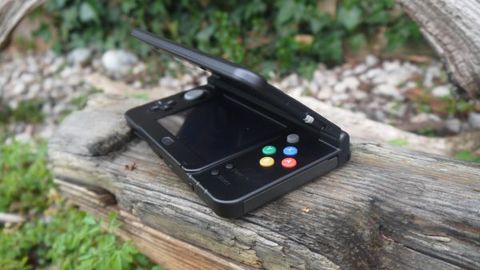TechRadar Verdict
Most of the New Nintendo 3DS's improvements were minor ones, but the second analogue stick and much-improved 3D feature made this the definitive Nintendo handheld. Now that the Nintendo Switch is available, you might wonder whether it's worth picking up this older piece of hardware from 2015. But with an impressive library of games and a budget price tag, the 3DS is well worth considering.
Pros
- +
New 3D is vastly better
- +
Second analogue nub is long overdue
- +
Still relatively affordable
Cons
- -
Battery hasn't really improved
- -
Processor bump divides old 3DS owners from new
- -
Charger not included
Why you can trust TechRadar
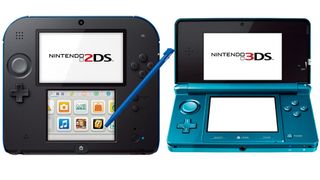
Since the first Nintendo DS model released in 2004, there have been various iterations on the dual-screen console. The New Nintendo 3DS reviewed here has since been usurped by the flagship New Nintendo 3DS XL – though those not fussed about 3D can check out the 2D-only New Nintendo 2DS XL or even cheaper sibling, the wedge-shaped Nintendo 2DS.
For those after a single-screen handheld that can truly play AAA games, head to our Nintendo Switch review.
UPDATE: This model has now been discontinued. See the box right for the current Nintendo 3DS models available, or read on below for our original review of the 2015 model...
For all the stuff it does well, Nintendo doesn't do itself many favours when it comes to naming conventions. After the messy and confused messaging of the Wii U and the perhaps even more confusing 2DS, it's now gone and named its latest 3DS the New Nintendo 3DS.
To add to the confusion, there are two different models, a standard New 3DS and the New 3DS XL. Why the distinction? The New 3DS proper comes with interchangeable faceplates, while the New 3DS XL sports a larger screen.
Just looking at them, though, you wouldn't be able to tell much difference between these and their prior form. It's less of a problem for the serious gamers and Nintendo nuts, but for the parents who are out to buy their kid a birthday present… well, you can see the problem.

But the New 3DS really is new. The alterations might not immediately strike you – many are under the hood – but the handheld has undergone a number of beneficial tweaks. From the addition of the right-stick near the face buttons and more powerful internals to the interchangeable faceplates, there are plenty of worthwhile tweaks that justify the upgrade.
Design
I've never had a problem with the design of the 3DS and, clearly, neither has Nintendo. The clamshell shape is as familiar as ever, although it has been bumped up a smidge in size to accommodate a slightly larger display.

As an added bonus, Nintendo has granted the power of interchangeable faceplates to this smaller model. Nintendo sent me a rather eye-catching Luigi one to try but you'll have a vast range to choose from (Japan already has 40) if you fancy some added customisation. Why this is absent on the XL is a bit of a mystery to me – again, I imagine it comes down to market research.
The system itself also comes in a number of styles and colours. There's the classic Red/Black and Blue/Black combinations, but Nintendo has also announced or already launched Pokemon-themed versions, Lime Green, Pink and Galaxy-themed iterations of the handheld as well.

Open it up and, again, it's a familiar sight. As a nice little touch, the face buttons now replicate the colours of those on the SNES controller. But the biggy is the one we've been waiting on for far too long - a second analogue stick.
- Read: The best Nintendo 3DS games!
Don't be fooled by that puny-looking grey nib that's sprouted on the right hand side - it's a fully-fledged C-stick capable of 360 degree movement. It feels stiff but it's surprisingly sensitive. During my time playing Majora's Mask it worked wonderfully for controlling the in-game camera. Much of that is down to the placement that makes thumb-jumping between face buttons and analogue stick super easy.
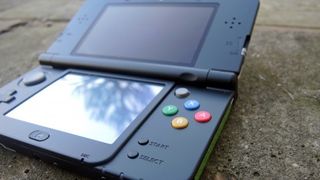
To go with your new analogue stick is a pair of added shoulder buttons, putting the much-berated Circle Pad Pro accessory out of a job. Thank goodness, it was ugly as sin. Meanwhile, the new ZL and ZR buttons sit side by side with the old shoulder pressers, making Nintendo's handheld finally feel complete.
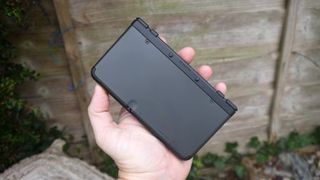
But there's more; the wireless button is now gone, the start and select buttons both rest below the fact buttons, the volume slider sits on the left-hand side of the top screen, and the power button has shifted to the bottom right of the device. That last one is perhaps my only niggle with the new aesthetic as it makes turning the console on and off a tad more awkward than it should be.
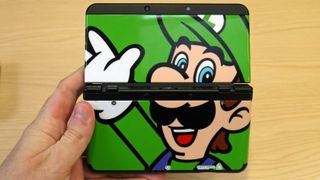
Switching up the design isn't the only reason for changing the faceplates on the New 3DS - both the battery and MicroSD card lie beneath. The fact you need a screwdriver to change an SD card in 2015 is, in my eyes, a design flaw – especially when you consider how quickly those cards fill up.
But that's not the strangest decision Nintendo has made on the New 3DS. No, the strangest decision was to not include a charger with the console. I guess the assumption is that most buyers will be upgraders from an older 3DS, but what about everyone else?

These days it's assumed that any gadget not running on AA batteries is going to come with some sort of charger in the box, and I think there are going to be a lot more disappointed people than Nintendo anticipates.
- Best Nintendo 3DS games: 20 fantastic titles you can take on the go
Hugh Langley is the ex-News Editor of TechRadar. He had written for many magazines and websites including Business Insider, The Telegraph, IGN, Gizmodo, Entrepreneur Magazine, WIRED (UK), TrustedReviews, Business Insider Australia, Business Insider India, Business Insider Singapore, Wareable, The Ambient and more.
Hugh is now a correspondent at Business Insider covering Google and Alphabet, and has the unfortunate distinction of accidentally linking the TechRadar homepage to a rival publication.
